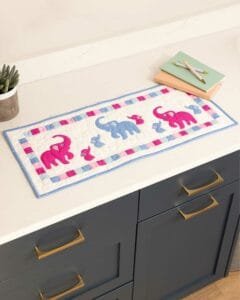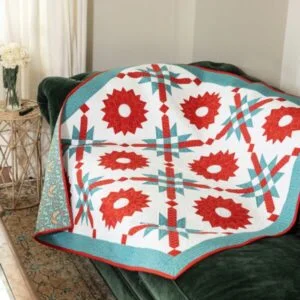Making a spacious bag that doesn’t sag at the bottom is a dream project for many sewing enthusiasts, crafters, and DIY lovers. Whether you’re creating a tote for everyday use or a custom shopping bag, ensuring that the bag remains roomy yet structurally strong is essential. No one likes a saggy-bottomed bag that loses its shape when you put in your belongings.
In this comprehensive guide, we’ll dive deep into the techniques and strategies for making a spacious bag that doesn’t sag at the bottom while maintaining its beauty and functionality. From choosing the right materials to adding support and finishing touches, you’ll learn all the steps needed to create a bag that looks great and performs even better.
If you’ve ever finished sewing a bag and found it collapsing under its own weight, you’re not alone. It’s a common issue, but one that can be easily prevented with a few design adjustments and mindful construction. Read on as we walk through all the tips and insights that will change the way you sew bags forever.

Choose the Right Fabric for Structure
When making a spacious bag that doesn’t sag at the bottom, the fabric you choose plays a major role in determining the final look and strength of your bag. Certain fabrics offer better support and longevity than others.
The best base fabric for a non-saggy bag is a medium to heavy-weight cotton canvas. This type of fabric provides the right balance of flexibility and firmness. If you’re going for a more stylish look, consider decorator fabric, which has body and comes in various prints.
You should also add interfacing to your fabric to give it extra structure. Fusible interfacing can be ironed directly onto the fabric and creates a solid feel that resists sagging. Choose a medium or heavy-weight interfacing depending on your desired firmness.
Another tip is to double-layer the base, which means sewing two layers of sturdy fabric together for the bottom panel. This gives even more reinforcement and allows the bag to carry heavier items without losing its shape.
For lining, avoid using very thin cotton or slippery fabric unless it’s reinforced. A thick lining like denim or duck cloth adds more support and durability. Always consider how the fabric behaves under weight before choosing it.
Don’t forget that bag handles also affect structure. Using thick webbing or sewing padded handles gives the bag better balance and stops it from pulling down unevenly. Quality fabric and components are the foundation for a strong bag that lasts.
Reinforcing the Bottom Panel
A key element in making a spacious bag that doesn’t sag at the bottom is how you construct and reinforce the bottom section. This area carries most of the weight and should be thoughtfully designed.
Begin by cutting a bottom panel that is slightly wider than your sides. This helps with weight distribution and prevents the sides from collapsing into the base. If possible, add rounded or boxed corners to create more depth and space.
Insert a stiff stabilizer like Peltex or foam interfacing between the fabric layers. These materials keep the bottom flat even when carrying books, groceries, or electronics. Make sure it’s securely stitched into place or tucked inside a fabric pocket.
You can also sew an internal sleeve at the bottom of the bag and slide in a plastic or cardboard base. This method allows you to remove or replace the insert whenever needed. Choose thick plastic or recycled plastic canvas to maintain firmness.
Another method is using quilting techniques—adding a layer of batting and quilting the bottom panel to maintain thickness and visual appeal. This works well with fabric bags and adds aesthetic value.
Never skip topstitching around the bottom area. It not only adds a clean finish but reinforces seams to prevent tearing. This extra line of stitching distributes tension along the panel edges.
The goal is to distribute the weight evenly while keeping the bag bottom from turning into a hammock. Reinforcement is the difference between a pro-level bag and a beginner flop.
Smart Design Choices for a Strong Bag
A major part of making a spacious bag that doesn’t sag at the bottom is in the design itself. Planning out your project with strength and structure in mind ensures better results.
Start with a boxy or rectangular shape, as these hold their form better than slouchy or rounded designs. Structured silhouettes naturally resist sagging and give a more professional appearance.
Add side panels with pleats or darts, which give more space inside the bag while maintaining straight edges. This allows the bag to expand without deforming under pressure.
Always include internal seams with topstitching or binding. Not only do they look cleaner, but they also provide reinforcement and prevent fraying over time. Bound seams are especially strong for heavy-use bags.
Don’t forget the power of pockets—inside and outside. Interior pockets distribute the load better by keeping items from all gathering at the bottom. Outside pockets also balance the weight and offer convenience.
Use rivets and bar tacks at stress points like handle joins and corner seams. These metal reinforcements are commonly found in commercial bags and greatly improve durability. Just a few well-placed rivets can extend your bag’s life.
Lastly, design the bag so that it stands upright even when empty. This is the ultimate test of making a spacious bag that doesn’t sag at the bottom—it should hold its shape under its own weight.
Adding Finishing Touches for Durability
Your efforts in making a spacious bag that doesn’t sag at the bottom can be elevated by paying attention to finishing touches. These small details make a big difference in long-term use.
Add bias tape or leather trim along the edges to prevent wear. These finishes look great and add an extra layer of reinforcement to seams and corners. Fabric-covered piping can also enhance shape and style.
Use reinforced stitching patterns like the box-and-cross for handles. These are stronger than a single straight stitch and better for load-bearing areas. Always double-stitch heavy-use sections.
Consider using magnetic closures or zippers to maintain structure when the bag is closed. Open-top bags tend to sag more quickly under weight. A good closure helps retain form and keeps items secure.
For added shape, sew fabric-covered plastic boning or wire around the upper edge of the bag. This acts like a skeleton and helps the bag maintain its shape from top to bottom.
Include feet or base studs on the bottom to lift the bag off surfaces and prevent wear. These also help distribute the weight more evenly and reduce pressure points.
Finally, clean up any raw edges, frays, or uneven seams. A clean finish ensures that your efforts in making a spacious bag that doesn’t sag at the bottom look just as good as they perform.
FAQ: Frequently Asked Questions
What is the best fabric for a non-saggy bag?
Heavy canvas, denim, duck cloth, and upholstery fabric are great choices. They offer structure while being easy to sew and durable for daily use.
How do I reinforce the bottom of a handmade bag?
Use stiff stabilizers like Peltex, foam, or plastic canvas. You can also sew a pocket for a removable insert or double up the fabric layers.
Can I fix a bag that already sags at the bottom?
Yes, by adding a bottom insert or sewing in a stabilizer, you can often restore the shape of a sagging bag. It’s a simple and effective upgrade.
Is interfacing necessary for bag-making?
Absolutely. Interfacing adds thickness and structure to fabric, preventing sagging and helping the bag hold its shape even when filled.
Why does my tote bag collapse at the bottom?
It’s likely due to soft fabric and no reinforcement. Consider redesigning with better material, using interfacing, and adding a sturdy base.
How do I make a fabric bag look professional?
Pay attention to clean seams, structured panels, reinforced stitching, and quality finishes like topstitching, piping, or internal pockets.
Conclusion
In this article, you’ve learned everything about making a spacious bag that doesn’t sag at the bottom—from choosing the right fabric and reinforcing the base to designing for strength and adding finishing touches. By applying these techniques, your handmade bags will be not only more durable but also more attractive and functional.
We hope this guide inspires your next project. If you’ve enjoyed it or found it helpful, please leave your honest opinion and suggestions below. Your feedback helps us grow and serve you better with more useful tutorials and tips.



